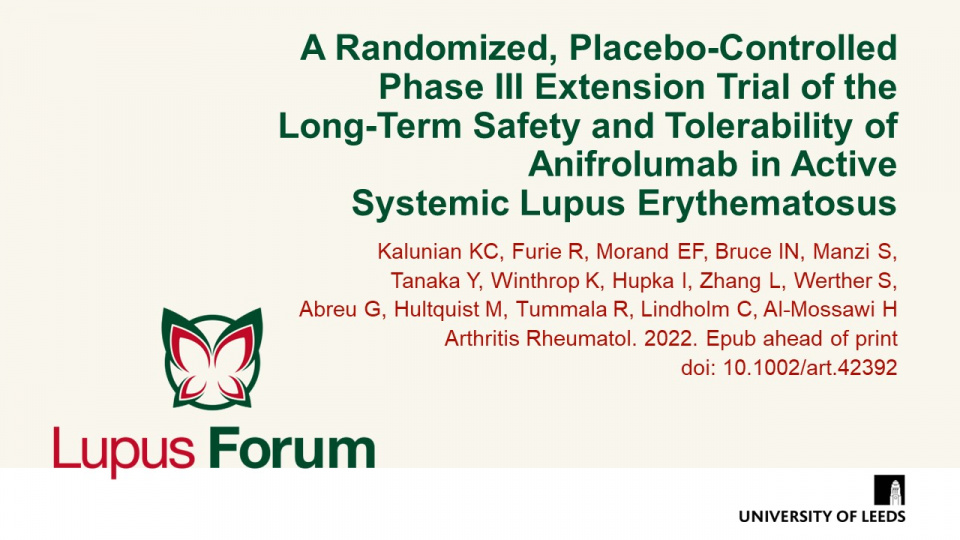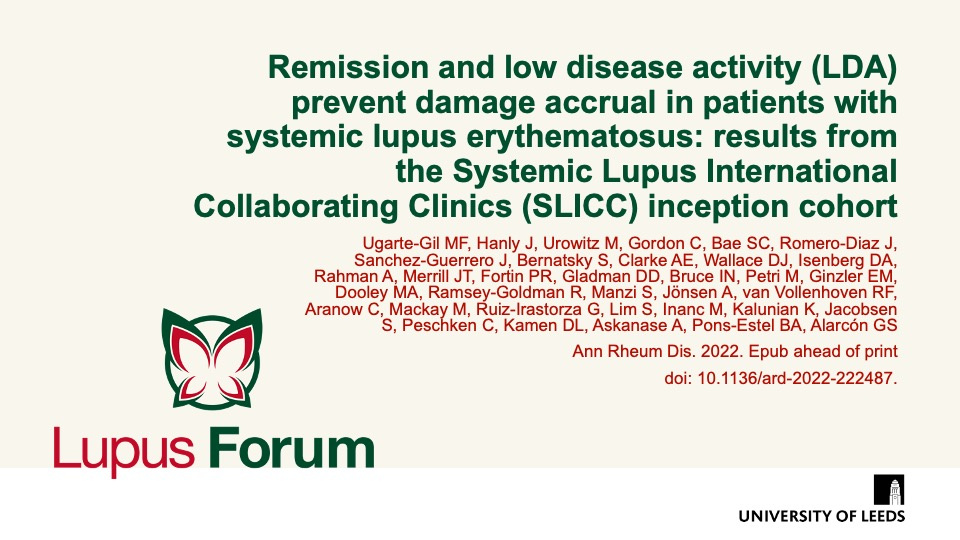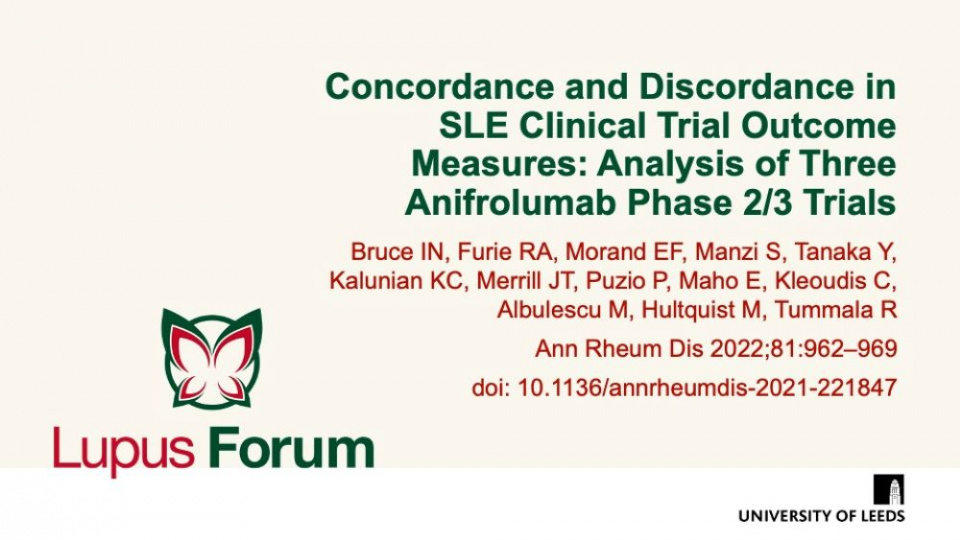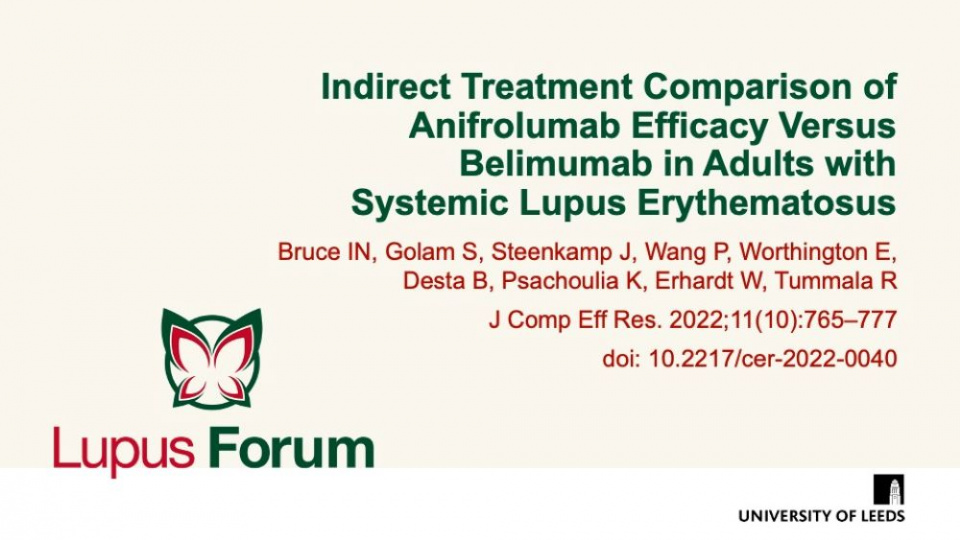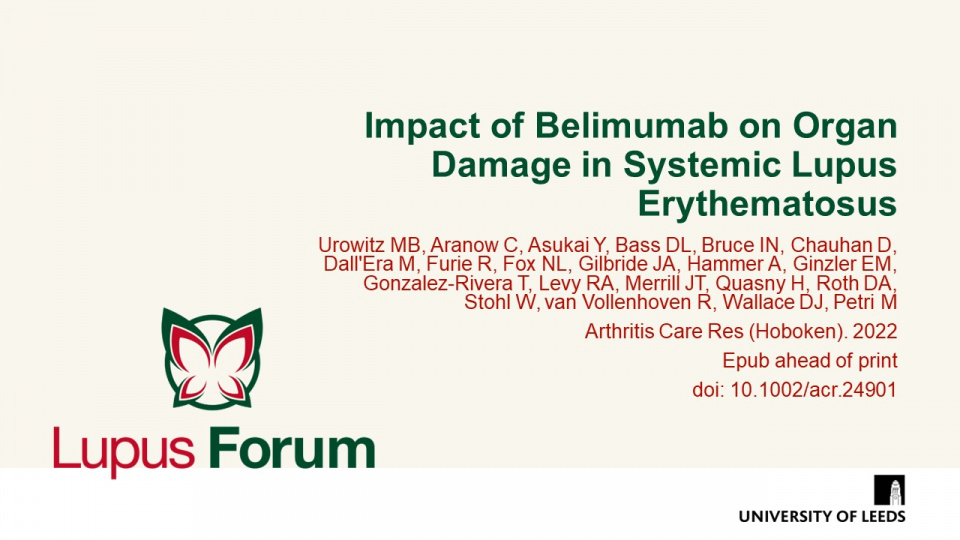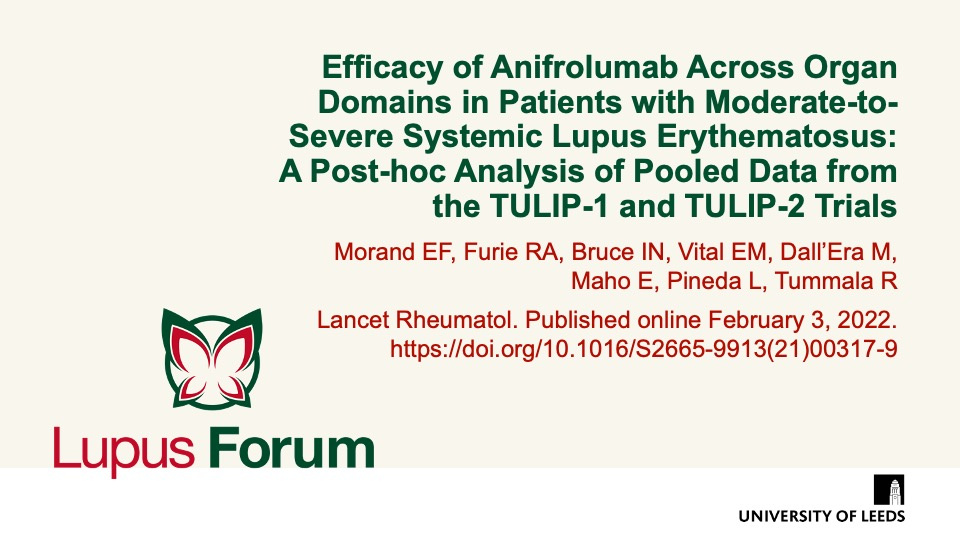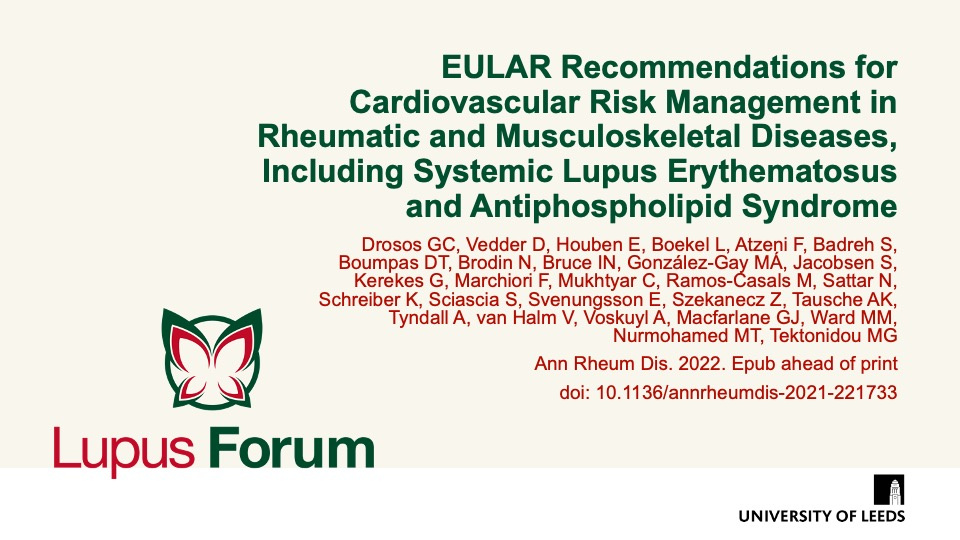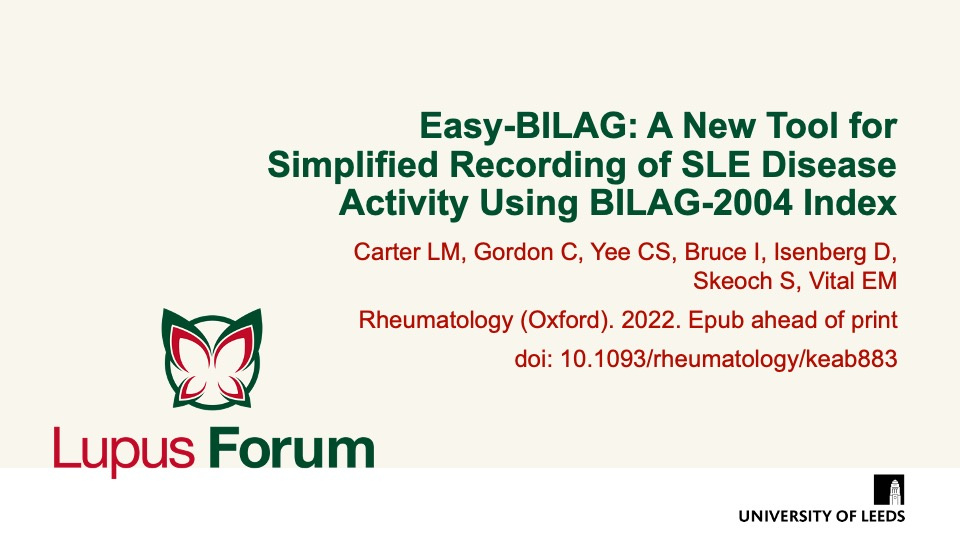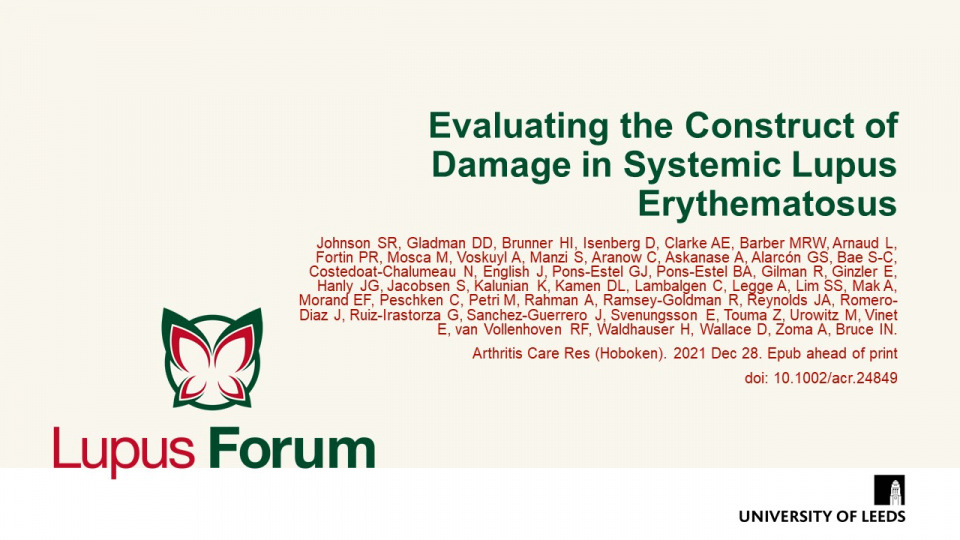Publications
Find coverage of the latest original articles on Lupus, focusing on those with data on therapeutic interventions and those that have clinical impact.
A Randomized, Placebo-Controlled Phase III Extension Trial of the Long-Term Safety and Tolerability of Anifrolumab in Active Systemic Lupus Erythematosus
Arthritis Rheumatol. 2022. Epub ahead of print doi: 10.1002/art.42392
Long-term extension study shows an acceptable long-term safety profile of anifrolumab in SLE, in addition to sustained improvements in disease activity and reduction in glucocorticoid use.
Remission and low disease activity (LDA) prevent damage accrual in patients with systemic lupus erythematosus: results from the Systemic Lupus International Collaborating Clinics (SLICC) inception cohort
Ann Rheum Dis. 2022. Epub ahead of print doi: 10.1136/ard-2022-222487.
Large multinational, multiethnic cohort, study highlights the importance of treating-to-target in SLE.
Keywords:
Concordance and discordance in SLE clinical trial outcome measures: analysis of three anifrolumab phase 2/3 trials
Ann Rheum Dis 2022;81:962–969 doi: 10.1136/annrheumdis-2021-221847
Bruce, et al. investigate the degree of concordance between BICLA and SRI-4 response across anifrolumab trials (TULIP-1, TULIP-2 and MUSE) in order to better understand drivers of discrepant systemic lupus erythematosus (SLE) trial results.
Indirect treatment comparison of anifrolumab efficacy versus belimumab in adults with systemic lupus erythematosus
J Comp Eff Res. 2022;11(10):765–777 doi: 10.2217/cer-2022-0040
Population-adjusted comparative study provides insights for decision makers and clinicians about the comparative efficacy of anifrolumab and belimumab in patients with moderate-to-severe systemic lupus erythematosus (SLE) who are receiving standard therapy.
In the absence of head-to-head comparisons, Bruce, et al. assessed the comparative efficacy of the two biological therapies currently approved in the EU and USA for the treatment of moderate-to-severe SLE (anifrolumab 300 mg and belimumab 10 mg/kg).
After adjusting for important cross-trial differences, their results showed that anifrolumab was associated with significantly greater treatment benefits than belimumab.
Keywords:
Impact of belimumab on organ damage in systemic lupus erythematosus
Arthritis Care Res (Hoboken). 2022 Epub ahead of print doi: 10.1002/acr.24901
Review of clinical trial and real-world data on the effects of belimumab on organ damage in adult patients with SLE shows that belimumab reduces key drivers of organ damage, decreases organ damage progression and, in those with lupus nephritis (LN), decreases renal-related events.
Keywords:
Anifrolumab efficacy and safety by type I interferon gene signature and clinical subgroups in patients with SLE: post hoc analysis of pooled data from two phase III trials
Ann Rheum Dis. 2022; 0:1–11. doi: 10.1136/annrheumdis-2021-221425
IFN-I signalling plays a key role in SLE pathogenesis, and anifrolumab has demonstrated inhibitory effects on IFN-I signalling in patients with SLE. Vital, et al. characterised efficacy and safety of anifrolumab in patients with moderate-to-severe SLE based on interferon gene signature, demographic and clinical subgroups using data pooled from the Phase III TULIP-1 and -2 trials.
Efficacy of anifrolumab across organ domains in patients with moderate-to-severe systemic lupus erythematosus: a post-hoc analysis of pooled data from the TULIP-1 and TULIP-2 trials
Lancet Rheumatol. Published online February 3, 2022
Across two pivotal phase 3 trials (TULIP-1 and TULIP-2), anifrolumab treatment improved systemic lupus erythematosus (SLE) disease activity across multiple organ domains, compared with placebo.
Keywords:
EULAR recommendations for cardiovascular risk management in rheumatic and musculoskeletal diseases, including systemic lupus erythematosus and antiphospholipid syndrome
Ann Rheum Dis. 2022. Epub ahead of print doi: 10.1136/annrheumdis-2021-221733
EULAR recommendations can guide clinical practice and future research for improving cardiovascular risk (CVR) management in rheumatic and musculoskeletal diseases.
Keywords:
Easy-BILAG: a new tool for simplified recording of SLE disease activity using BILAG-2004 index
Rheumatology (Oxford). 2022. Epub ahead of print doi: 10.1093/rheumatology/keab883
Easy-BILAG is a high-accuracy, time-efficient tool for recording BILAG-2004 disease activity in systemic lupus erythematosus (SLE).
Disease activity measurements in SLE are necessary for optimal patient care, treat-to-target approaches and clinical guidelines. However, administrative burden and potential frequency of errors with the current comprehensive disease activity instrument (BILAG-2004) limits its use in routine practice.
Evaluating the Construct of Damage in Systemic Lupus Erythematosus
Arthritis Care Res (Hoboken). 2021 Dec 28. Epub ahead of print
Study identifies shifts in the paradigm of systemic lupus erythematosus (SLE) damage and develops a unifying conceptual framework to inform development of a revised SLE Damage Index (SDI).
Shifts in the concept of damage in SLE have occurred with new insights into disease manifestations, diagnostics, and therapy. Consequently, there is a need for a revised SDI, to incorporate additional factors that contribute to damage accrual.


